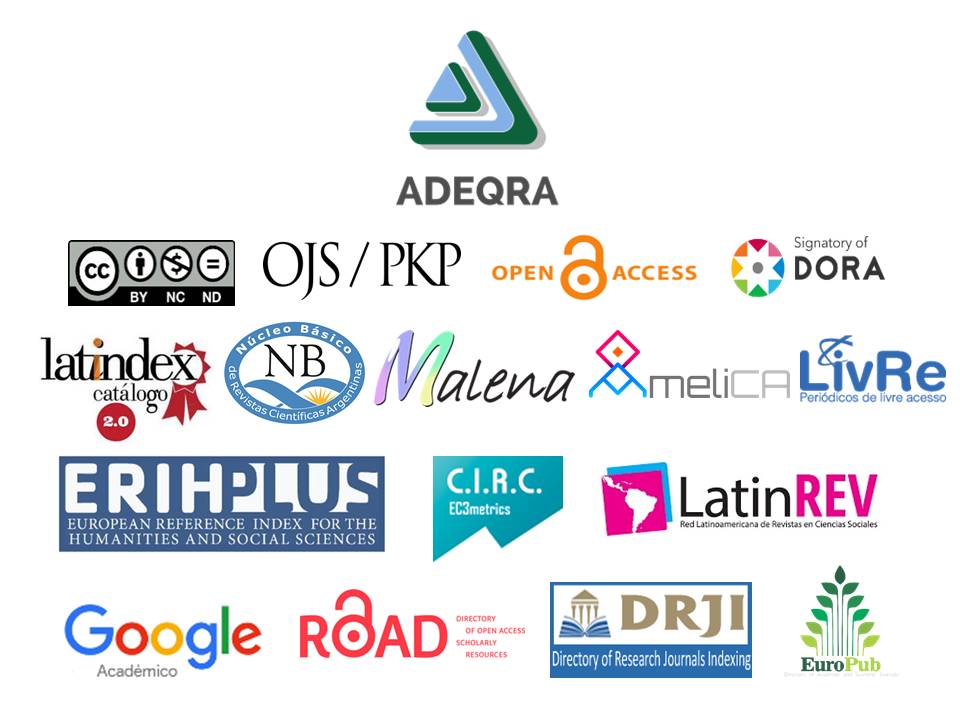Application of the concept of hormesis in the teaching of the chemistry of transition metals
Keywords:
teaching, chemistry, hormesis, bioelements, prior knowledgeAbstract
The aim of this work is to approach the study of the chemistry of transition metals, and more specifically of iron and copper, associating the concept of hormesis with previous knowledge of physics, chemistry and experimental results of the teacher-researchers. In the theoretical approach to transition metals, bibliographic data and research results of teachers are included, and relationships are established with dose and concentration of solutions calculus, interpretation of graphs, tables and figures. Likewise, the analysis of the participation of these metals as catalysts of reactions of reactive oxygen species formation is added and their toxic effects are discussed. This strategy brings students closer to scientific research, increases their interest, attention and participation in class, and strengthens the incorporation of content related to transition metals.
References
Blanco, A., España, E., Rodríguez, F. (2012). Contexto y enseñanza de la competencia científica. Alambique, Didáctica de las Ciencias Experimentales, 70, 9-18.
Boveris A. y Repetto M.G. (2020) Brain mitochondria: distribution and function. New York: Nova Science Publishers.
Caamaño, A. (2012). ¿Cómo introducir la indagación en el aula? Los trabajos prácticos investigativos. Alambique, Didáctica de las Ciencias Experimentales, 70, 83-91.
Calabrese, V., Cornelius, C., Cuzzocre, S., Iavicoli, I., Rizzarelli, E., Calabrese, E. (2011). Hormesis, cellular stress response and vitagenes as critical determinants in aging and longevity, Mol Asp Med, 32, 279-304. https://doi.org/10.1016/j.mam.2011.10.007
Díaz-Barriga, Á. (2013). Guía para la elaboración de una secuencia didáctica. UNAM, 10(04), 1-15.
Franco-Mariscal, A. J., Oliva-Martínez, J. M. (2012). Dificultades de comprensión de nociones relativas a la clasificación periódica de los elementos químicos: La opinión de profesores e investigadores en educación química. Revista Científica, 16(2), 53-71.
Franco-Mariscal A. J., Oliva-Martínez J.M., Blanco-López, A., España-Ramos, E. (2016). A Game-Based Approach to Learning the Idea of Chemical Elements and Their Periodic Classification. J Chem Educ, 93, 1173–1190.
Godoy, K.M. (2020). Estrategias didácticas para la enseñanza y aprendizaje de los elementos químicos y su información en la tabla periódica. Educación las Américas, 10.
Hoffmann, G.R. (2009). A perspective on the scientific, philosophical, and policy dimensions of hormesis, Dose-Response, 7, 1-51.
Larson K.G., Long G.R., Briggs M.W. (2012). Periodic Properties and Inquiry: Student Mental Models Observed during a Periodic Table Puzzle Activity. Journal of Chemical Education, 89, 1491−1498.
Mattson, M.P. (2008). Hormesis defined, Ageing Res Rev, 7, 1-7. doi: 10.1016/j.arr.2007.08.007
Musacco-Sebio, R., Ferrarotti, N., Saporito-Magriñá, C., Semprine, J., Fuda, J., Torti, H., Boveris, A., Repetto, M.G. (2014). Oxidative damage to rat brain in iron and copper overloads, Metallomics, 6(8), 1410-1416. doi:10.1039/c3mt00378g
Musacco-Sebio, R., Saporito-Magriñá, C., Semprine, J., Torti, H., Ferrarotti, N., Repetto, M.G. (2014). Rat liver antioxidant response to iron and copper overloads, J Inorg Biochem, 137, 94-100.doi: 10.1016/j.jinorgbio.2014.04.014
Olivares S. (2014). ¿Formulación química? Nomenclatura química. Eureka sobre Enseñanza y Divulgación de las Ciencias, 11(3), 416-425.
Perez, V., D´Annunzio, V., Valdez, L.B., Zaobornij, T., Bombicno, S., Mazo, T., Longo Carbajosa, N., Gironacci, M., Boveris, A., Sadoshima, J., Gelpi, R. (2016). Thioredoxin-1 Attenuates Ventricular and Mitochondrial Postischemic Dysfunction in the Stunned Myocardium of Transgenic Mice, Antioxidants & Redox Signaling, 25, 78-88. doi: 10.1089/ars.2015.6459
Rattan, S.I., Fernandes, R.A., Demirovic, D., Dymek, B., Lima, C.F. (2009). Heat stress and hormetin-induced hormesis in human cells: effects on aging, wound healing, angiogenesis, and differentiation, Dose-Response, 7, 90-103. doi: 10.2203/dose-response.08-014.Rattan
Repetto M. (2012). Enfoque didáctico para la enseñanza de la química de los metales de transición: Bioinorgánica, homeostasis redox y toxicidad de los metales de transición en sistemas biológicos, Educación en la Química, 18(1) 3-15.
Rodríguez Revelo, E., Alarcón Salvatierra, P.A. (2020). Estrategias didácticas para efectivizar procesos de enseñanza en la educación superior. Dilemas Contemporáneos: Educación, Política y Valores, 12. http://www.dilemascontemporaneoseducacionpoliticayvalores.com/
Sanmartí, N., Márquez, C. (2017). Aprendizaje de las ciencias basado en proyectos: del contexto a la acción. Ápice. Revista de Educación Científica 1(1), 3-16. https://doi.org/10.17979/arec.2017.1.1.2020
Saporito-Magriñá, C., Musacco-Sebio, R., Acosta, J.M., Bajicoff, S., Paredes-Fleitas, P., Boveris, A., Repetto, M.G. (2017). Rat liver mitochondrial dysfunction by addition of copper(II) or iron(III) ions, J Inorg Biochem, 166, 5-11. doi: 10.1016/j.jinorgbio.2016.10.009
Saporito-Magriñá, C., Musacco-Sebio, R., Andrieux, G., Kook, L., Orrego, M., Tuttolomondo, M.V., Desimone, M., Boerries, M., Borner, C., Repetto, M.G. (2018). Copper-induced cell death and the protective role of glutathione: the implication of impaired protein folding rather than oxidative stress, Metallomics, 10(12), 1743-1754. doi: 10.1039/c8mt00182k¨
Published
How to Cite
Issue
Section
License
Copyright (c) 2022 Fabiana Lairion, Christian Saporito Magriñá, Alejandra Cimato, Margarita Martinez Sarrasague, Marisa Repetto

This work is licensed under a Creative Commons Attribution-NonCommercial-NoDerivatives 4.0 International License.



